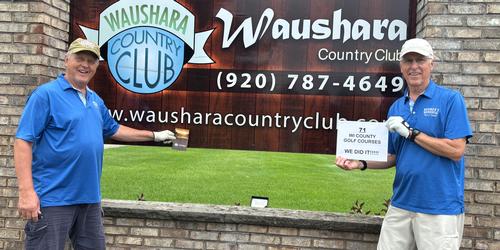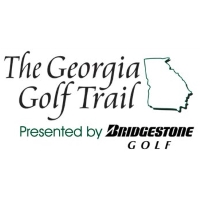A Formula for the Renaissance of Golf
By Barney Adams
A rather arrogant title methinks. Let's start with the question, does golf need a renaissance and to accurately answer I looked up the word. While rebirth is given as a synonym the broader meaning is a cultural change from history going forward. When I accessed data from The National Golf Foundation and the US Census, it struck me that golf, as played regularly by amateurs, needs a renaissance...badly.
Numbers can be pretty boring so here's the macro analysis. (The census data and National Golf Foundation reports are available for those interested in the details.) We have approximately the same number of golfers playing today as we did in 1990. Since then over 3800 courses have been built in the US and our population has increased over 25%. Moreover, the demographics of our population's increase in age and income fit the profile of potential golfers. Something has happened over the last 20 years that has resulted in less people taking up and enjoying the game.
Distilling commentary on the Internet we learn that golf has become too time- demanding, too expensive, and too frustrating. I agree with the first comment on time but consider the argument on expense. Paying money to be aggravated and frustrated is not exactly logical, change that to enjoyable and rewarding and the expense argument weakens considerably.
Taking those specific complaints what follows will speed up play, make the game more fun and do so at no cost to the golfer or the industry. I'm not writing this just as a story. This is about changing the game of amateur golf, taking on its culture, tradition and negative reaction from the players themselves. To say it's a formidable task is almost funny. My approach is to produce hard data, draw the conclusions, and try to get support at all levels, from players to the organizations who influence the game.
Sometimes you have to experience something in a different environment to get a clear understanding. For transparency, I'm a 9 handicap 71 year old having played the game for over 50 years. I also worked in the equipment side of the golf industry and possess a deep love for the game. Some months ago I was invited to play with guys I didn't know on a course I'd never played before. The group was easily in my age bracket and most had higher handicaps. The course wasn't long we were going to play from the back tees, short of 6700 yds. Since my regular course was longer, the players better, my ego was on full throttle. I was prepared to star; I'd show these guys what I had once been, a player( at least my memory convinced me thus.)
At the end of the round (an uninspiring 83) I reflected. My first reaction was: with a 9 handicap an 83 is within normal limits. Yet as I thought more, this conclusion was a trap, one that I have somehow accepted over the years. It was an immediate reaction: 83...9 handicap...ok. But what about a couple of other things? Did I really have fun or was I managing frustration? Did the time go by quickly and with pleasure or was it a struggle? As I contemplated these and other ideas the entire round began to take on a different perspective. It was like I had played two different courses, one eliciting a "hey not so bad, you need to work on your game a little" response and the other, a vague mystery about overall length and my game.
There were at least 4 holes where most of the group could not reach the green in regulation, but because of my incredible length I only fell short on 3. Further I still hit (or more correctly tried to hit) hybrids and the occasional fairway wood into greens designed to receive shorter irons. The playing conditions were excellent, and in honest reflection, the results were well within my norm considering that on average I play yardages from 6600 to 6900.
I have to pause here because among my friends, virtually every male to whom I relate this story, (not senior golfers, amateurs of all ages) the mere suggestion of a 6700 yard course being too long is treated with scorn and derision. The basic response is, maybe for you (you wimp) but not me.
Was I any different in my reaction and the answer is certainly not. I had to be missing something. Maybe my golf balls had gone bad, maybe there was more wind than I realized, maybe I had the flu or worse the beginning of some horrible muscle deterioration caused by my advanced age. None of these were apparent and after a trip to my doctor, who looked at me quizzically as he found nothing wrong, I reverted to an old habit: analyzing numbers.
I don't quite remember why, maybe watching an event on TV, but I started with the distance Tour players hit their tee shots. Officially it's 287 (but that includes positioning holes) so a 300 yard drive is normal and the big hitters easily exceed that number. I then went on the Internet and found several articles on the distance male amateurs hit their tee shots. They ranged from averages of 205 to 230, and to be clear, this does not include the college players or scratch amateurs. I'm talking about the great majority of players who support the game: you, me, us.
I used 230 because, well, you know, I must be hitting it that far!
Even then the difference is 70 yards compared to the tour professional 300. On irons they hit 20 yards farther and here again I'm giving us the benefit of a very big doubt. It's closer on our strong lofted wedges, but when they launch a 5-iron 220 yards over water its game over.
So using my ego inflated numbers I get 70 yds on the drive and 20 yds on irons for a total of 90. Take a par 72 course with 10 par 4 holes and the difference is 900 yards. Add in the same formula for the par 3 and par 5 holes and the total easily reaches 1400 yards. (Let me emphasize, easily) EUREKA! The reason why my little 6700 yard course was so long is because it was like a tour professional playing an 8100 yard course. And there you have it, something a Tour Professional with their great skills would never, do we ignore and frustrate ourselves on a regular basis.
If you stop and think about the "why" it's grist for the mill of the analyst. We do not now, nor will we ever, hit the ball as solidly as a tour player, control the distance, possess the shot making skills they do, and yet we continually spot them in the area where they have the greatest advantage, length. It's like scrimmaging against an NBA player except that our basket is 12', or batting against a major league pitcher and letting him throw fast balls from 45', or serving a tennis ball from 20' behind the baseline. You could have a field day listing comparable pursuits.
To further test my theory I got a young tour aspirant to play with me one Friday late, when the front nine was empty. All he had to do was accept my leveling the playing field and tee off 90 yards behind me, which meant from an adjoining fairway in some cases. I didn't move up I played the "mens" tees that in this case produced a 6800 yard course. After a few 280 yard shots into par 4 holes I asked him if he'd play that distance on a regular basis. The look I got was accompanied by "Are you kidding me?" and he decided he needed to go and practice.
What prevents us from playing the 6000-6400 yard courses (which is what the Tour plays weekly given their superior distance)? And by the way, the same data analysis produces yardages of 4000-4600 for women, a discussion I'll have later. What is it that makes the male ego respond, that chest swelling, "no way, not me, I'm not playing those front tees."
I've tested the theory with several of my golfing friends and can come to only one conclusion; it's the misconception and our ego reaction to the front tees when it should really be only about Tour Length.
It's also incorrectly looked at as a senior movement, us "old guys" move up. The 230 yard average did not come with any age classification, it is universal to the core who support the game.
Let's say your course has a neat little par 4 of 345 yards, a couple of par 3's 160 or less, and moving to the front tees ruins what are very nice designs. Leave those holes as is. This is a critical point because moving to the very front tees would turn them into weak, uninteresting golf holes.
How about a par 4 at 445 Yards and a par 5 at 440? Crazy stuff you say? Not necessarily. The par 4 has a fairly wide slightly down second shot to a large green. Your 230 yard drive leaves 215, and given your Sunday best, you can get to it (or at least close enough to have a chance at par). There's no restriction against having a long hard hole, just like the Tour.
The 440 yard par 5, with the same 230 yard tee shot, leaves 200, carry 210, to the flag. This hole has water in front, trouble on all sides, a classic risk/reward situation. Now 200 all carry, over water, for our group... well, the challenge is very interesting! OK, 98% of the time we should lay up but again, the ego response: only 200 yards, why? It's a tight target, surrounded by trouble. The shot that works is high, landing softly, and the person hitting it isn't concerned about the distance, he's thinking about the correct trajectory.
This is where the PGA of America comes in. I'm encouraging (badgering) them to make this their legacy. Use their considerable golf skills to set courses up with a set of Tour Length tees and during the process, educate members, explaining the reasoning and the benefits. At the same time I'd love to see amateur golfers understand and ask for the change. Use the 230 yard drive as a base, give us second shots from 160 on down, some 5 pars reachable in two; nothing Tour players don't experience in every event.
Golf magazines, Internet sites are flush with articles on how to get core golfers playing more and new people into the game. Yes, come on lets all play continually from the equivalent of 7500 to 8300 yards, take an inordinate amount of time and be hellishly frustrating. It's a credit to the great game that more people haven't quit. Tour length would give us faster rounds, more fun (if you consider the occasional birdie putt more fun). Those two things alone and we don't need more benefits.
Once started this will spawn ideas well beyond anything I can imagine. One club pro suggested a season long Tour Length event at his club to get his members used to playing the new tees. How about PGA section recognition to the best Tour length layouts, show them in the PGA magazine.
I mentioned women's Tour Length at 4200-4400. I used the same formula comparing average women golfers to LPGA players. This has more ramifications than you might think. For years I've read that the influx of women golfers will increase rounds played. Hasn't happened, net zero to minus. The National Golf Foundation calls it churning; the same number that start playing is equaled by the ones that quit. Maybe, just maybe, putting them on Tour Length courses will allow them to enjoy golf, play faster and stick with the game.
Since I'm the advocate of Tour Length I have tried to come up with reasons why it might be a bad idea, find significant flaws. One is handicapping. It could affect the way the USGA or other systems handicap courses. Given the dramatic benefits from faster play and players having more fun, I cannot envision any organization that promotes golf not embracing the concept and making necessary changes.
One of my friends made me stop and think. A Scotsman, he brought up two significant issues, one factual, one philosophical. The first was that here in the US we overwater our courses. He said we have a fixation on lovely green fairways which translates to soft and minimum roll. The second was our obsession with par. He said if we took the European attitude and just made numbers, the frustration issue would be mitigated.
I agree on the first thought, it's a basis for another story. I am a great fan of firmer, faster courses; and healthy fairways, light green to a little brown, are fine with me. If the result is increased driving distance from my suggested "Tour Length Layout" with less maintenance cost, that's wonderful. As to ignoring par and just making numbers, I said he missed my point. Just give me the same relative distances as the greatest players and we can play any system that works.
I don't advocate turning the 6700 or the 7000 yard tees into flower boxes. The strong amateur players need their challenges. One of my favorite stories involves a guy from the Northeast who spent winters in Florida. Once a year in February he flew back, went outside, experienced the cold and took the next flight back. My gang and I can treat the 6700 yard tees with equal reverence.
Some golf writers have written about playing shorter tees and the response has been essentially nil. This isn't about shorter tees it's about a Tour Length Layout. I realize I'm repeating here but I've explained this many times on a one-on-one basis. The universal reaction starts negative, but when I go through the logic, and ask "why not, what is wrong with the analysis" the negative reactions turn positive.
I sincerely hope the PGA of America, aided by all the concerned bodies, use their considerable influence to install Tour Length as a renaissance in golf. It needs it, we need it.
Article Tags: Renaissance of Golf
Revised: 01/17/2011 - Article Viewed 29,225 Times
About: Barney Adams
![]() Barney Adams the founder of Adams Golf and creator of the Tight Lies Fairway Wood. A 30 year veteran of the golf industry Barney is the author of "The WOW Factor" a business book centered around his entrepreneurial experience. Barney just received the Ernie Sabayrac Award by the PGA of America for lifetime contributions to the golf industry. It will be presented this January at the 2011 PGA Show in Orlando Florida.
Barney Adams the founder of Adams Golf and creator of the Tight Lies Fairway Wood. A 30 year veteran of the golf industry Barney is the author of "The WOW Factor" a business book centered around his entrepreneurial experience. Barney just received the Ernie Sabayrac Award by the PGA of America for lifetime contributions to the golf industry. It will be presented this January at the 2011 PGA Show in Orlando Florida.
Contact Barney Adams:
Adams - Retired Founder











